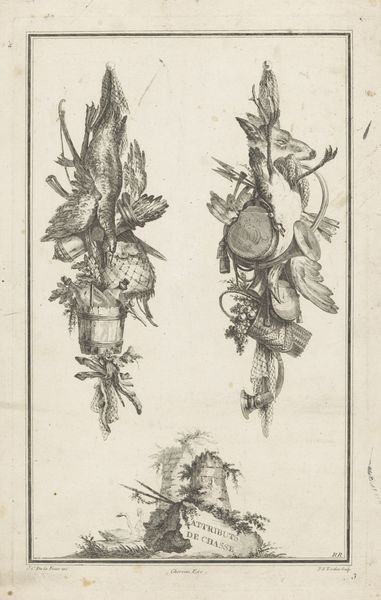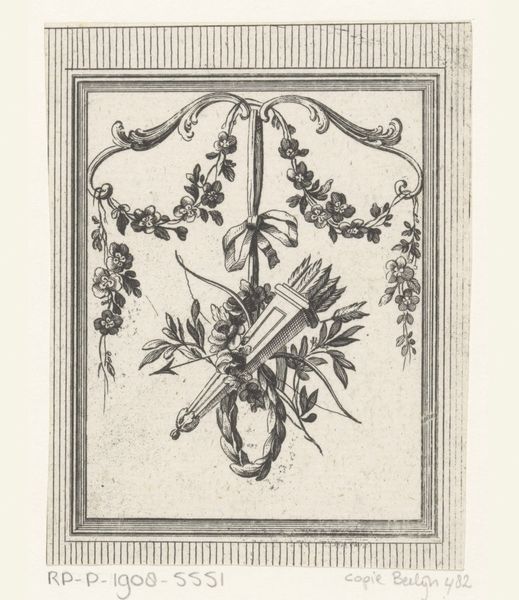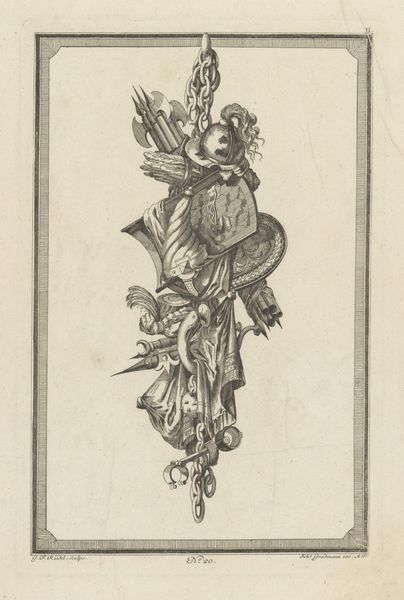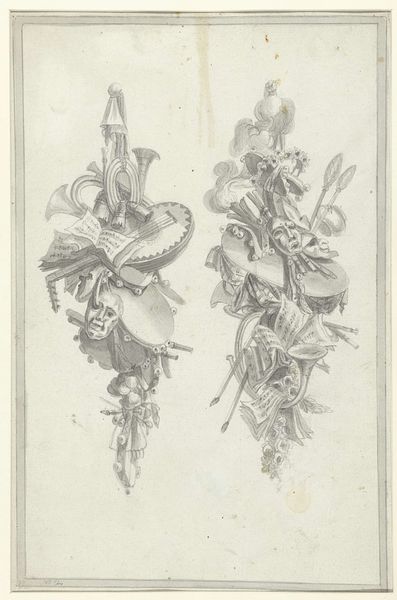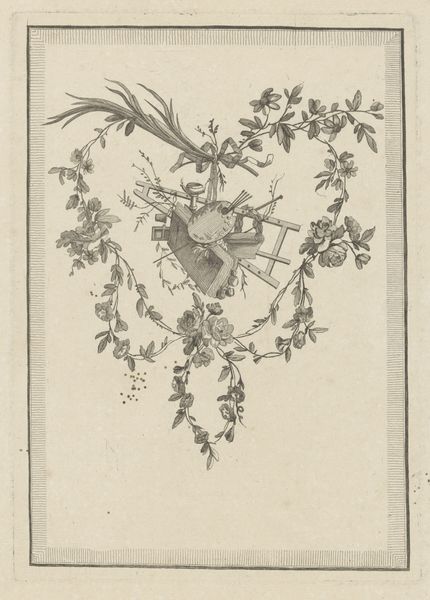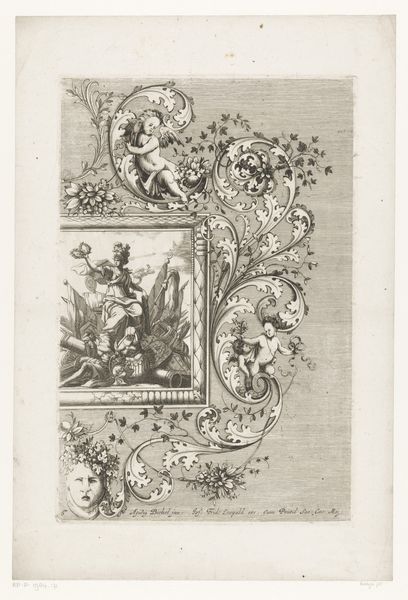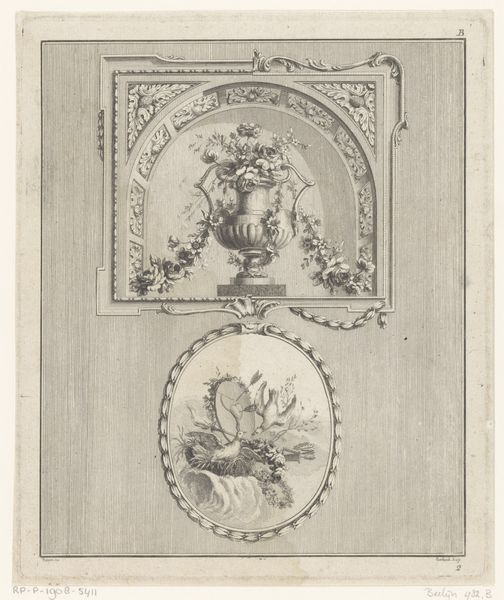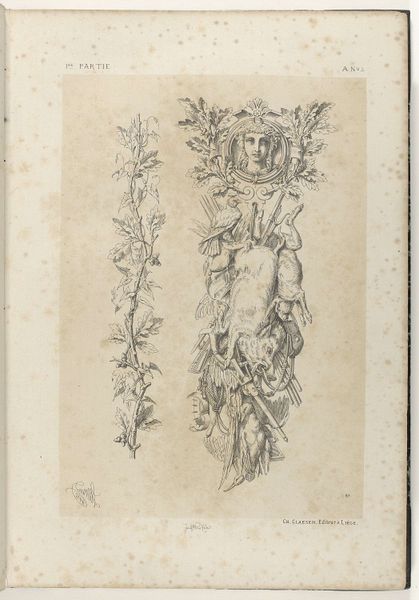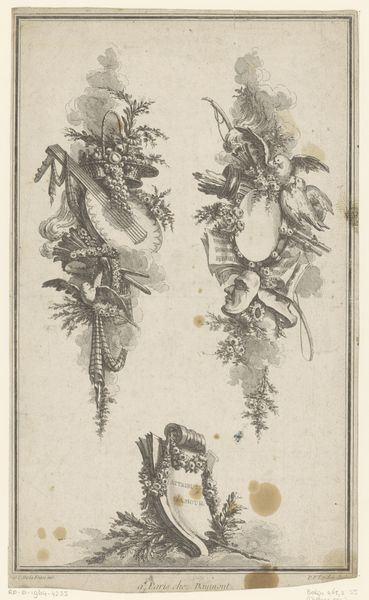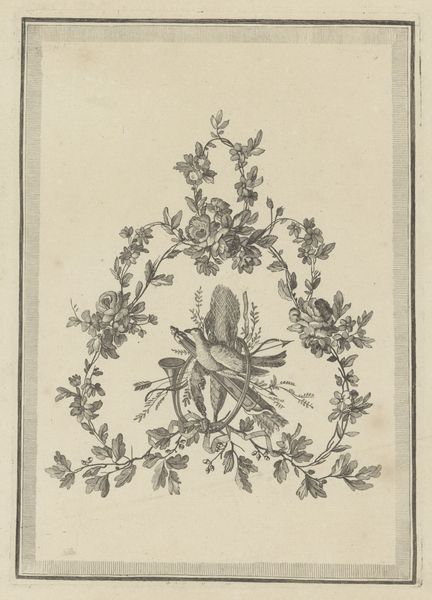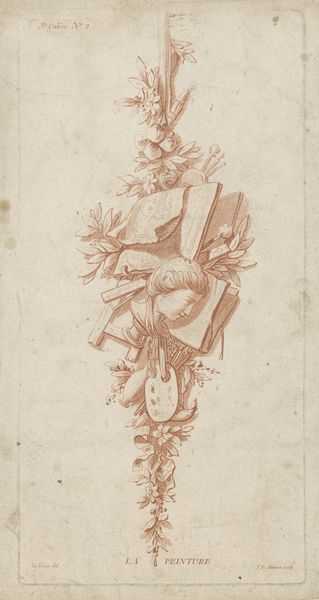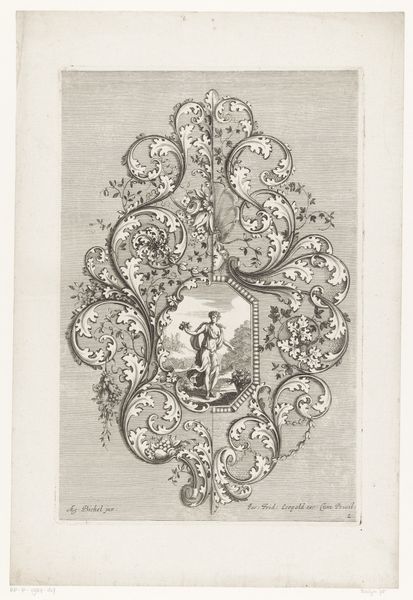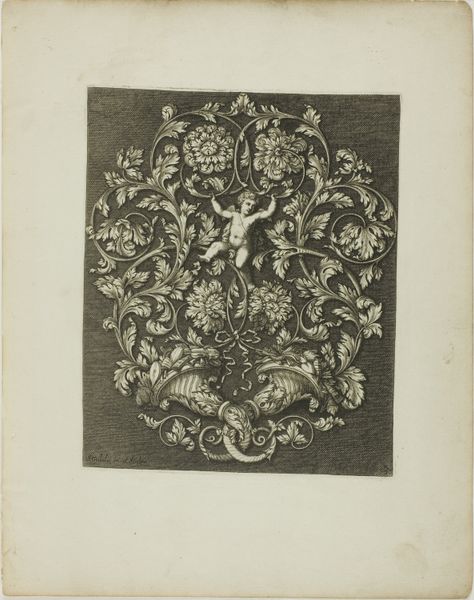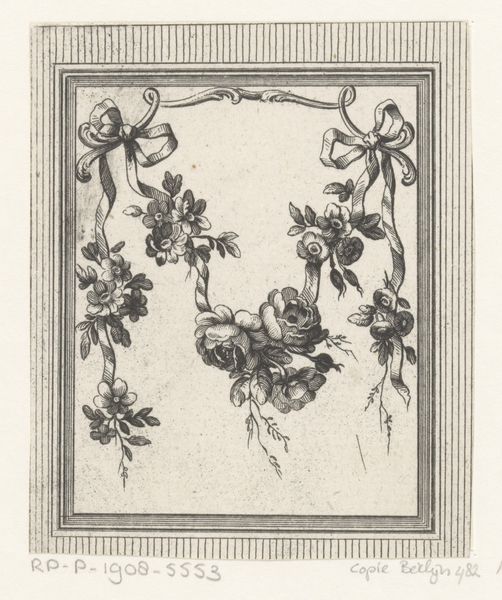
Dimensions: height 278 mm, width 183 mm
Copyright: Rijks Museum: Open Domain
Curator: Here at the Rijksmuseum, we have before us "Trofee met helmen en harnas," or Trophy with Helmets and Armor. This engraving, created by Gottlieb Friedrich Riedel in 1779, is a stunning example of Baroque printmaking. What’s your first take, Editor? Editor: Well, I'm immediately struck by its slightly menacing elegance. It's as if all the grim possibilities of conflict have been tidied up into a neat, almost decorative package. Sort of says "war, but make it fashion", doesn't it? Curator: Indeed. Observe how Riedel uses line and composition to create a sense of order and structure. The symmetry, while not perfect, offers a clear visual hierarchy. The various elements of warfare, carefully arranged, create a potent symbolic statement about power. Editor: I dig the composition—it feels top-heavy, like the whole thing's gonna topple over any second! Maybe Riedel was hinting at the fragility of power, or the constant tension of maintaining it back in the day. It's as if he froze a moment of precarious balance. Curator: One could interpret it that way. But the engraver's skill in rendering texture cannot be denied; from the sheen of the helmets to the roughness of the various fabrics, a certain illusionistic reality is established. Note also how Riedel positions the frame as an integral compositional element. Editor: Oh, for sure, it's beautiful craftmanship. But this trophy still has that playful, slightly absurd energy of, like, putting on your armor to go fetch a croissant from the bakery! The artistry itself nearly undercuts the violence that made such displays of strength possible. Curator: The engraving, produced during the latter stages of the Baroque period, demonstrates a transition into a more refined, ornamental sensibility, while retaining Baroque grandeur. Its function transcends simple militarism and engages the sublime as a way to project state authority and aesthetic pleasure. Editor: Hmm... maybe so. Still, the work reminds me that war isn’t just a clash of weapons or nations—but also about showing off, strutting, and posing with your spoils in the flashiest way possible. Perhaps that’s just how power presents itself, then and now. Curator: Precisely. “Trofee met helmen en harnas” compels us to think about the relationship between martial prowess, artistic creation, and political representation. Editor: Yep, a grimly fashionable piece of historical reflection that has you think! I’m all for it.
Comments
No comments
Be the first to comment and join the conversation on the ultimate creative platform.
